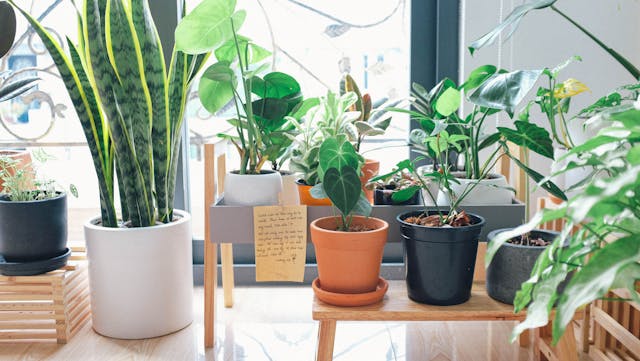How to Build a Successful Greenhouse Business from Scratch
Posted on 21-09-2024 12:30 μμ

Are you ready to start your own greenhouse business? If so, this article is for you. Building a successful greenhouse business from scratch requires careful planning and execution of several key steps. This guide will cover everything you need to know about starting your greenhouse business.
Introduction to Greenhouse Business
Greenhouses are used to grow crops in controlled environments that allow farmers to produce high-quality plants year-round. With the increasing demand for fresh fruits and vegetables, many people have turned to greenhouse farming to generate income while providing healthy food options to their communities.
Choosing the Right Location for Your Greenhouse
The first step in building a successful greenhouse business is choosing the correct location. You want to find an area with plenty of sunlight, good drainage, and access to water. It's essential to consider your region's climate and weather patterns when selecting a site for your greenhouse. For example, if you live in an area prone to harsh winters or extreme temperatures, you may need specialized equipment to maintain optimal growing conditions.
Selecting the Best Crops to Grow
Once you have selected the perfect location for your greenhouse, it's time to choose which crops to grow. Some popular choices include tomatoes, lettuce, peppers, cucumbers, and herbs like basil and mint. When deciding what to plant, consider market demand, growth season, and profitability—research different varieties of each crop to determine which ones perform best under specific environmental conditions.
Building and Maintaining a Successful Greenhouse
Now that you have chosen your location and crops, it's time to build your greenhouse. Depending on your structure's size and complexity, you can hire contractors or DIY. Either way, make sure to follow all necessary safety precautions during construction. Once your greenhouse is built, proper maintenance is critical to ensure maximum yield and quality of your crops. This includes regular cleaning, pest control, temperature regulation, and irrigation management.
Marketing Your Greenhouse Products
With your greenhouse up and running, it's time to sell your products! Develop a solid marketing strategy that targets potential customers in your local community. Consider attending farmer's markets, setting up online sales channels, and partnering with restaurants and grocery stores. Make sure to highlight the benefits of buying locally grown produce, including better taste, higher nutritional value, and support for small businesses.
Managing Your Finances and Expenses
Finally, managing your finances and expenses ensures long-term success in your greenhouse business. Keep accurate records of all income and expenses, including materials, labor costs, and overhead fees. Set realistic financial goals and regularly review them to stay on track. Additionally, it explores funding opportunities through grants, loans, and other available resources for agricultural businesses.
In conclusion, building a successful greenhouse business takes hard work and dedication but can be incredibly rewarding, personally and financially. By following these steps and staying committed to your vision, you, too, can create a thriving greenhouse enterprise.
The Secrets to Keeping Your Greenhouse Thriving
Welcome to the world of greenhouse gardening! Maintaining a successful greenhouse requires dedication, effort, and knowledge. In this blog post, we will share some secrets that can help you keep your greenhouse thriving throughout the year. Let's get started!
Introduction to Maintaining a Successful Greenhouse:
A greenhouse is an excellent way to grow plants all year round, regardless of the weather conditions outside. It provides a controlled environment where you can regulate temperature, humidity, light, and ventilation to suit your plant's needs. However, maintaining a successful greenhouse takes time and effort. You must monitor your plants regularly, adjust environmental factors, and proactively prevent pests and diseases from spreading. With these tips in mind, let's move on to the next topic.
The Importance of Proper Ventilation in Your Greenhouse:
Proper ventilation is crucial for keeping your greenhouse thriving. Without adequate airflow, your plants may develop disease or become stunted due to lack of oxygen. To ensure proper ventilation, open windows or vents during the day when temperatures are warmest and close them at night when it cool down. You should also install exhaust fans to create positive pressure inside the greenhouse, which helps draw fresh air through the vents. Additionally, consider installing shade cloth to reduce heat buildup during hot summer.
How to Keep Pests and Diseases Away from Your Plants:
If not appropriately managed, pests and diseases can wreak havoc on your greenhouse plants. One effective method for controlling pests is natural predators such as ladybugs or lacewings, which feed on common greenhouse pests like aphids and mites. Another option is to use neem oil, a natural insecticide that repels many pests. For diseases, avoid overwatering and prune any dead or damaged leaves promptly. Also, rotate crops every season to prevent soil-borne diseases from building up.
Tips for Optimizing the Use of Space in Your Greenhouse:
In a small space like a greenhouse, maximizing available space is essential. Use vertical growing systems such as hanging baskets or wall-mounted planters to maximize height. You could also invest in compact varieties of vegetables or herbs that don't require much room. Finally, paths between rows should allow easy access for maintenance tasks like watering, pruning, or harvesting.
Conclusion:
Maintaining a successful greenhouse requires attention to detail and commitment. By following these simple steps, you can keep your greenhouse thriving year-round. From proper ventilation to pest and disease control and optimizing space usage, there are plenty of ways to ensure your plants stay healthy and productive. Good luck with your greenhouse gardening journey!